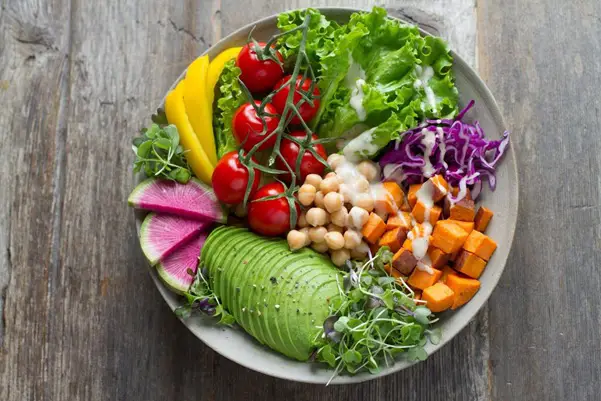Food Safety & Hygiene Guidelines For Buffets And Events
A buffet is a self-service form of dining in which the customers pay a fixed price and are entitled to select as much food as they wish. The cooks prepare food in bulk, and the staff refill the food as necessary.
This type of food setting has become popular for various events like weddings, birthdays, christenings, and funerals. They offer convenience as guests can select their preferred dishes from diverse options.
Buffets eliminate the need for serving staff, making event planning simpler and more cost-effective. Rather than dealing with pre-ordering and potential forgetfulness, buffets cater to diverse preferences, making them especially practical for large gatherings.

Importance of Food Safety & Hygiene
Food safety and hygiene prevent infections and diseases by safely handling, storing, and preparing food. It prevents contamination and germs from multiplying in foods and reaching dangerous levels.
Ensuring the quality and safety of food for human consumption is an integral part of the food preparation process. It needs to be considered at every point – from farm to fork.
Below mentioned are some of the key points highlighting the significance of food safety:
- Consuming contaminated food can cause food poisoning due to the viruses, bacteria and germs found in it.
- Food safety plays a vital role in preventing germs from growing and reaching dangerous and alert levels.
- It ensures the consumers’ health and saves them from paying for medical check-ups and medication.
- Personal hygiene is also essential, as 33% of food poisoning cases are due to improper hand washing. Proper hand washing can significantly reduce the number of food poisoning cases.
Food Safety Risks in Buffets
Buffets carry inherent risks due to the abundance and variety of food offerings, often left at room temperature for extended periods. The self-service nature of buffet dining also introduces the potential for varying levels of personal hygiene among diners.
Failure to maintain a sanitary environment during these stages can lead to bacterial growth, resulting in potential illnesses.
Typical bacteria that may contaminate buffet food or serving areas include:
- E. coli (potentially found in lettuce or soft cheese)
- Salmonella (commonly present in undercooked chicken or eggs)
- Listeria thrives in pre-packaged foods like sandwiches or bagged salads and is prevalent in deli meats.
Tips to Maintain Food Safety and Hygiene at Buffets
Regarding buffets, maintaining food safety and hygiene is very important. Whether organising a buffet for an event or overseeing a commercial buffet setup, employing proper food safety practices is essential. This guide will give valuable tips and guidelines to ensure the utmost cleanliness and safety throughout the buffet.
1. Always Remember The 4 C’s
The Food Standards Agency highly recommends implementing the 4 Cs to ensure good food hygiene. The 4 C’s include cleaning, cooking, chilling, and cross-contamination.
Cleaning
Every piece of equipment involved in the handling, storing, or preparing of food, from a fork to a fridge, is considered food equipment and needs cleaning.
Following are some considerations for cleaning:
- Clean and disinfect the food area where you prepare or serve food.
- Wash all equipment correctly and dry it.
- Plan a regular cleaning routine to ensure nothing gets missed and everything is cleaned systematically.
- Ensure your cleanliness too. If you don’t clean yourself properly, you might be spreading infections too.
Cross-contamination
To prevent cross-contamination, paying attention to the cleanliness of individuals, surfaces, and utensils and proper food storage and waste disposal is vital. This step is vital for keeping the food contamination-free, thereby preventing bacterial growth and ensuring the safety of people with food allergies. You can also provide your staff with food allergen training to teach them ways to prevent cross-contamination.
- To further decrease the risk of cross-contamination, use separate cutting boards and utensils for raw and ready-to-eat dishes. Between uses, carefully clean all utensils.
- Keep the meal covered until ready to serve to ensure cleanliness.
- To avoid cross-contamination, use a different serving utensil for each dish.
- Line the bins, have lids, and clean them regularly to manage waste properly. Furthermore, fill the bins sparingly.
Chilling
Some foods are temperature-sensitive and can grow bacteria at room temperature. Therefore, it is mandatory to maintain a particular optimal temperature condition for such types of food.
- You must take necessary measures in case of bringing food to an event. While transporting the food for a short time, use insulated boxes with ice or cold packs; otherwise, if transporting for a more extended period, make sure to use refrigerator units.
- Food items like meat and dairy should be kept inside the fridge for up to two hours.
- If you need to figure out how long the food could be kept outside, serve in tiny pieces and top up as required.
Cooking
Buffets usually have a variety of hot and cold foods. You need to cook and reheat foods thoroughly, keeping the recommended temperature guidelines in mind.
- Use food thermometers to ensure that meat is cooked the whole way through. Never serve meat items if they’re pink from the inside.
- If you are reheating food, it should be reheated to a minimum of 75°C. It needs proper cooking to kill the bacteria that may have grown since it was first cooked.
- Keeping the food warm, such as in a chafing dish, will alter when it can stay at room temperature.
- Rice should be served within one hour. You can store cooked rice items for up to one day in the refrigerator but do not reheat them more than once.
- Keep cooked food at 63°C. If you’re leaving it at room temperature, do not leave it there for more than two hours.
- Discard the food that has yet to be consumed within two hours.
2. Ensure Proper Uniformity
Ensuring staff members have proper uniforms is critical to maintaining a hygienic environment. Here are some key points to consider regarding the importance of staff having proper uniforms:
- All the staff must have proper and clean uniforms.
- The staff members must cover their hair with a hair net.
- Cover your hands adequately with disposable gloves. Change the gloves after handling different types of food, touching contaminated stuff, coughing or sneezing, or after 2 hours of use.
- If any staff member gets injured, take care of it immediately to avoid contaminating the food or area.
3. Maintain Good Personal hygiene.
Proper personal hygiene practices among food handlers significantly reduce the risk of contamination and bacterial transmission during food preparation and service.
- Wash your hands regularly with soap and water for at least 20 seconds.
- Use hand sanitisers when soap and water are not available.
- Maintain clean and trimmed fingernails.
- Keep your hair tied back or in a neat hairstyle to prevent it from falling into food or touching surfaces.
- Wear clean and properly fitted uniforms daily.
- Use disposable gloves when handling ready-to-eat food.
- Avoid touching the face, hair, or exposed skin while handling food.
- Take regular showers and use deodorant to maintain freshness.
- Cover any wounds or cuts with waterproof dressings to prevent contamination.
- Follow proper coughing and sneezing etiquette by using tissues or elbows to cover the mouth and nose.
- Regularly clean and sanitise personal items like phones and keys to minimise the spread of germs.
- Avoid wearing excessive jewellery and perfume, as they can be a potential source of contamination or allergic reactions.
Learn How to Manage Food Safety Hazards through Training Courses.
The best way to manage food safety hazards is by getting food safety training. You and those involved in food handling should take training courses, as they serve as invaluable resources to promote safe and hygienic practices within the food industry.
Food safety training will equip you and your staff with comprehensive knowledge about proper food handling, preparation, storage, and minimising contamination risks.
You should also get food allergen training to prevent cross-contamination and ensure the safety of customers with food allergies. It will create awareness about food allergies and teach preventive measures that will help elevate the food standard and the guests’ well-being.
Conclusion
Food safety and hygiene in buffets and food service settings are vital for the well-being of consumers and the reputation of establishments. Following the practises discussed in this blog can significantly reduce the risk of foodborne illnesses and allergen-related incidents, providing a delightful and safe buffet experience for all.
Pizza Stone Dough Roller Slicer Sauce
We exclusively bring you lists of some gadgets related to food, drinks, beverages for your home, kitchen, picnic, parties and more. Below are highly reviewed Pizza Stone Dough Roller Slicer Sauce on sale from Amazon store. ENJOY 🙂[amazon box="B001SAQDYS,B019S3W8AO,B00473ULA0,B000HK2DNA,B06X9QWJVV,B086P7GP35,1639730192" template="horizontal"]

